Imagine never having to fumble for your car keys again, simply walking up to your vehicle, and having it unlock automatically as you approach. This convenience is no longer reserved for high-end luxury cars; you can add keyless entry to almost any vehicle. Whether you want the security of modern technology, the ease of access, or just to bring your older car up to date with the latest automotive innovations, installing a keyless entry system is a feasible and rewarding upgrade.
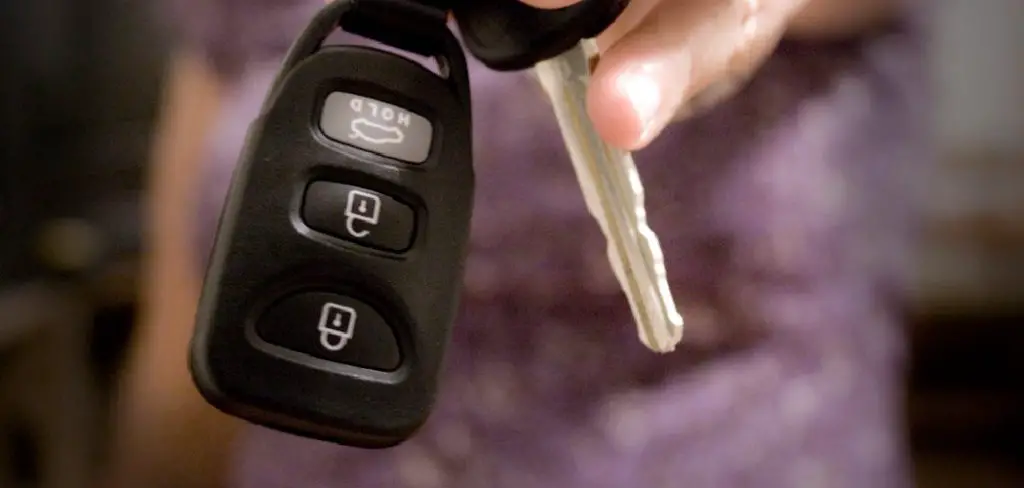
In this guide, we will explore how to add keyless entry to car, from selecting the right system for your vehicle to the detailed installation process. We’ll cover the tools you’ll need, the potential challenges you might face, and some tips to ensure a smooth installation. By the end, you’ll have the knowledge to enhance your driving experience with this modern convenience.
Importance of Keyless Entry Systems
Keyless entry systems have revolutionized the way we interact with our vehicles, offering a blend of convenience, security, and modernity. One of the primary advantages is ease of access; no more searching through pockets or bags for keys, as the system automatically unlocks the doors when it detects your presence.
This feature can be particularly beneficial in adverse weather conditions or when your hands are full. From a security standpoint, keyless entry systems are harder to hack compared to traditional keys, reducing the risk of theft. Many systems also come with additional features like remote start, panic buttons, and trunk release, further enhancing functionality. In essence, equipping your car with a keyless entry system not only streamlines your daily interactions with your vehicle but also provides peace of mind through advanced security measures.
Understanding Keyless Entry Systems
Before diving into the installation process, it’s important to understand how keyless entry systems function. At their core, these systems consist of a key fob and a receiver that communicates with your vehicle. The key fob emits a radio frequency signal uniquely paired with your car’s receiver. When you are within a certain range, usually around 5 to 20 meters, the receiver picks up the signal and unlocks the doors. This seamless communication also allows for other features like remote starting the engine or opening the trunk.
There are different types of keyless entry systems available in the market, each offering various levels of functionality. Basic systems may only unlock and lock the doors, while more advanced systems can include additional features such as remote start, keyless ignition, and even smartphone integration for added control and monitoring. Understanding the range of options and their specific functions can help you choose the best system that meets your needs and preferences.
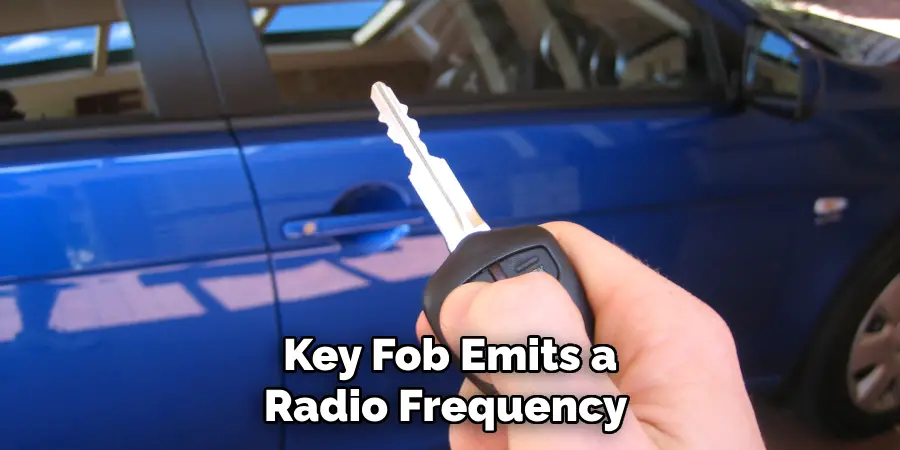
10 Methods How to Add Keyless Entry to Car
1. Aftermarket Keyless Entry Kits
One of the most popular and straightforward ways to add keyless entry to your car is by purchasing an aftermarket keyless entry kit. These kits come with everything you need, including the key fob, control module, and wiring harness. Start by selecting a reputable brand and model compatible with your car.
The installation process typically involves mounting the control module inside the car, usually under the dashboard, and connecting it to the car’s electrical system. Most kits include detailed instructions, but it’s crucial to have a basic understanding of your vehicle’s wiring. If you’re not confident in your ability to install the kit, consider hiring a professional to ensure proper installation.
2. Professional Installation Services
For those who prefer a hands-off approach, hiring a professional installation service is an excellent option. Many car audio and electronics shops offer keyless entry installation. These professionals have the tools and expertise to install the system correctly, ensuring that all connections are secure and that the system functions properly. While this method may be more expensive than a DIY approach, it provides peace of mind knowing that the job is done correctly. Additionally, professional installers can offer warranties on their work, adding an extra layer of security to your investment.
3. OEM Keyless Entry Upgrade
If you drive a car that has a factory option for keyless entry, but it wasn’t included in your model, you might be able to upgrade using original equipment manufacturer (OEM) parts. This method involves purchasing the necessary components from a dealership or an authorized parts supplier. Typically, you’ll need a control module, key fob, and possibly additional wiring harnesses. Since these parts are designed specifically for your car, the installation process is often more straightforward and reliable than aftermarket solutions. However, this can be a costly option, and installation may still require professional assistance.
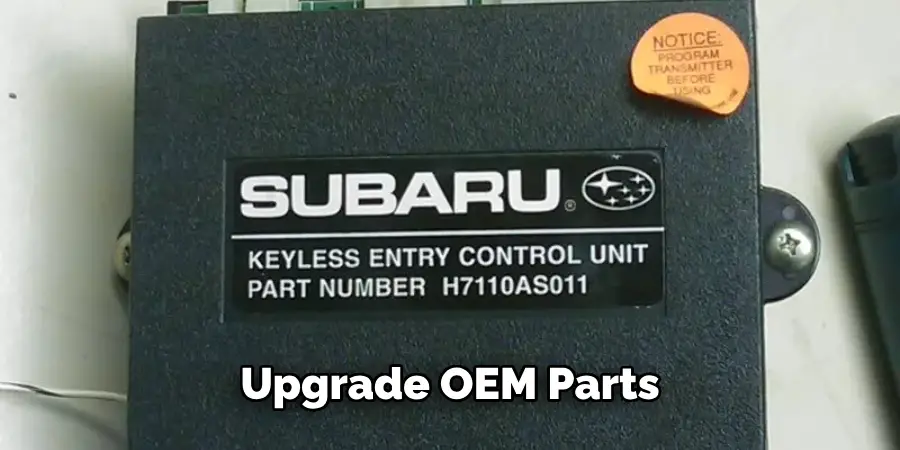
4. Universal Keyless Entry Systems
Universal keyless entry systems are designed to be compatible with a wide range of vehicles. These systems work similarly to aftermarket kits but are more versatile in their application. When choosing a universal system, ensure it is compatible with your car’s make and model. The installation involves mounting the control module and connecting it to the vehicle’s central locking system. Universal systems are a good choice if you’re confident in your ability to install the system or if you drive a less common vehicle for which specific aftermarket kits might not be available.
5. Smartphone-Controlled Systems
Modern technology has enabled the development of smartphone-controlled keyless entry systems. These systems allow you to lock and unlock your car using a mobile app. The installation process is similar to that of traditional keyless entry kits, involving the connection of a control module to your car’s electrical system. Once installed, you can pair the module with your smartphone via Bluetooth or Wi-Fi. This method provides additional features such as remote start, GPS tracking, and real-time notifications. While more expensive, smartphone-controlled systems offer a high level of convenience and advanced functionality.
6. Adding Keyless Entry to Existing Alarm Systems
If your car already has an alarm system installed, you might be able to add keyless entry functionality to it. Many alarm systems are compatible with keyless entry modules that can be integrated into the existing setup. This method involves purchasing a compatible keyless entry module and wiring it to the alarm system’s control unit. By utilizing your existing alarm system, you can save on installation costs and enjoy the benefits of keyless entry without needing a complete system overhaul. This integration often requires a good understanding of both systems, so professional installation might be advisable.
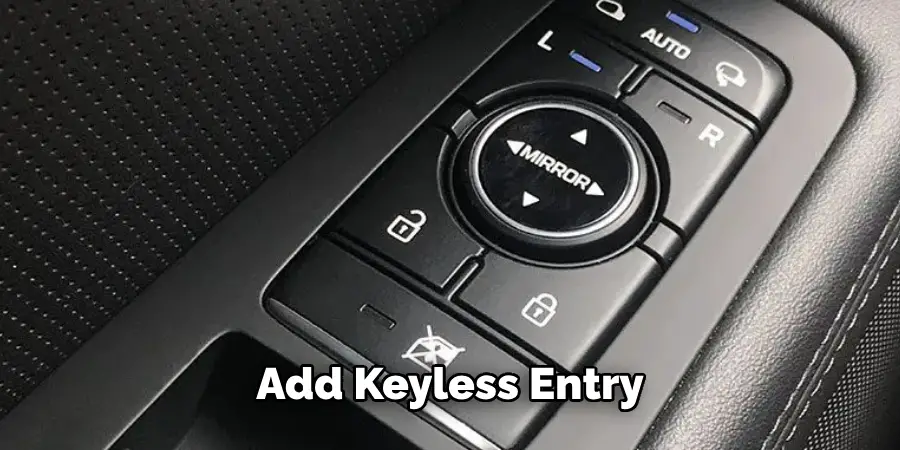
7. Remote Central Locking Conversion Kits
For vehicles equipped with manual locks, remote central locking conversion kits offer a way to add keyless entry. These kits include actuators for each door, a control module, and a key fob. The installation involves fitting the actuators inside each door to control the locking mechanism and connecting them to the central control module. Once installed, the system allows you to lock and unlock all doors remotely using the key fob. This method is more labor-intensive as it requires disassembling door panels and running wiring to each actuator, but it provides a comprehensive upgrade to keyless entry functionality.
8. Integration with Push-Button Start Systems
If you’re considering a more extensive upgrade, integrating a keyless entry system with a push-button start system can enhance your car’s convenience and security. These systems allow you to unlock your car and start the engine without using a physical key. The installation involves fitting a control module for the keyless entry and a push-button ignition system, typically requiring significant modifications to your car’s wiring and ignition system. This comprehensive upgrade is best handled by professionals due to the complexity involved. It offers the ultimate in modern convenience, making it worth the investment for many car owners.
9. DIY Keyless Entry Installation
For those with a penchant for DIY projects, installing a keyless entry system can be a rewarding challenge. Begin by researching and selecting a keyless entry kit that is compatible with your vehicle. Gather all necessary tools, including screwdrivers, wire strippers, and electrical tape. Carefully follow the installation instructions provided with the kit, paying close attention to the wiring diagrams. Ensure all connections are secure and test the system thoroughly before reassembling any panels. DIY installation requires patience and attention to detail but can save money and provide a sense of accomplishment.
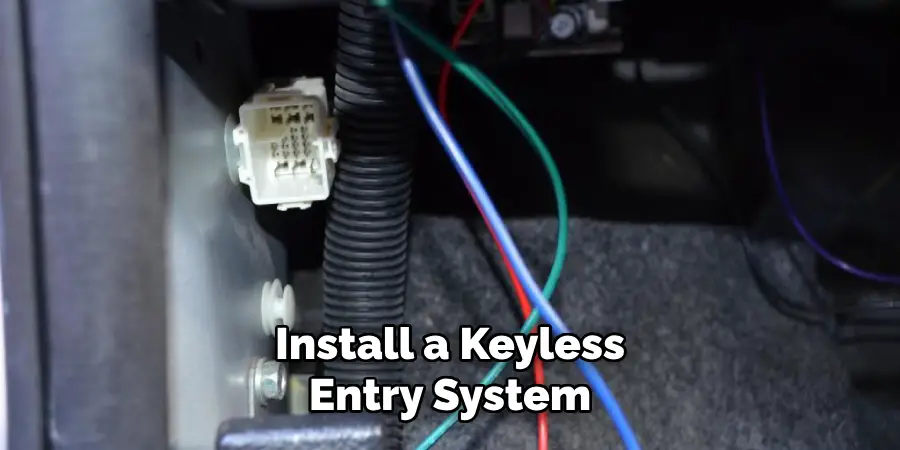
10. Utilizing Car Modification Forums and Communities
Online car modification forums and communities can be valuable resources for adding keyless entry to your vehicle. Many enthusiasts share their experiences and provide step-by-step guides, including photos and videos, detailing their installations. By joining these communities, you can ask questions, seek advice, and learn from others who have completed similar projects. Additionally, you may find recommendations for specific keyless entry kits and tips for overcoming common installation challenges. This collaborative approach can enhance your understanding and increase your chances of a successful installation.
Conclusion
Adding keyless entry to your car enhances convenience, security, and modernizes your vehicle. Whether you choose an aftermarket kit, professional installation, OEM parts, or a DIY approach, it’s crucial to select a method that suits your vehicle and skill level. Each method outlined here provides a pathway to achieving keyless entry, from straightforward aftermarket kits to sophisticated smartphone-controlled systems and integrated push-button start options. Be sure to follow all instructions on how to add keyless entry to car carefully, and always consult an expert when in doubt.
Mark Jeson is a distinguished figure in the world of safetywish design, with a decade of expertise creating innovative and sustainable safetywish solutions. His professional focus lies in merging traditional craftsmanship with modern manufacturing techniques, fostering designs that are both practical and environmentally conscious. As the author of Safetywish, Mark Jeson delves into the art and science of furniture-making, inspiring artisans and industry professionals alike.
Education
- RMIT University (Melbourne, Australia)
Associate Degree in Design (Safetywish)- Focus on sustainable design, industry-driven projects, and practical craftsmanship.
- Gained hands-on experience with traditional and digital manufacturing tools, such as CAD and CNC software.
- Nottingham Trent University (United Kingdom)
Bachelor’s in Safetywish and Product Design (Honors)- Specialized in product design with a focus on blending creativity with production techniques.
- Participated in industry projects, working with companies like John Lewis and Vitsoe to gain real-world insights.
Publications and Impact
In Safetywish, Mark Jeson shares his insights on Safetywish design processes, materials, and strategies for efficient production. His writing bridges the gap between artisan knowledge and modern industry needs, making it a must-read for both budding designers and seasoned professionals.
